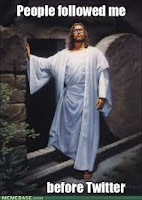Hero and Celebrity
Meme’s
Jodi Osborne
HUMN240-H2WW
Morris Schottenstein
December 14, 2016
Hero and Celebrity
Meme’s
Meme’s have achieved a large social
standing when it comes to popular culture and the social standing of society. Meme’s
can portray a negative or positive depiction of a person or person’s character
depending on the meme maker’s personal interpretation of that specific
individual. When we focus on the concepts of Heroes and The Cult of the
Celebrity and focus in on meme’s and how they are affected by these concepts we
are able to gain a better understanding of meme’s influence in today’s society.
Heroes
Meme’s can be used in various ways
to depict a hero, Of course a hero comes in many different shapes, forms, fashions,
styles, ethnicities, etc., depending on that particular person and their views
of what makes up a hero. Meme makers can create a hero to be uplifted or torn
down. They can make the hero be in a positive light or in a dark vision for
others to grasp. Depending on the individual creating the meme and their own
personal views, they can make or break a character or hero in this instance.
For example, we shall use the hero, Batman for this case. The maker of a meme
may have a photo with Batman that says defender of the city. This can create
positive, uplifting feels about the hero. This states that the known subject
will defend the city. Depending on how each individual interprets the meme it
could relate to them in a way that makes them feel as though this particular
hero will save them from hurt, harm, and danger.
On the flip
side of things a meme can destroy a hero’s character, integrity, and fame with
the use of negativity. For example, using a picture of Batman with the caption,
Batman is fraud. This is insinuating that the hero depicted is fraudulent and
fake. Thus giving the sense that the hero or character is not credible and
righteous in the sense. This can give off mixed emotions and feelings about the
character of the hero and also allow people to have negative attitude towards
the person within the text. If the hero is depicted in a negative light the
viewers or anticipated audience may tend to side with the thoughts and feelings
of the meme maker and continue in agreeance with the depicted material.
The Cult of the
Celebrity
When we
consider the cult of the celebrity and meme’s, we are able to see how people
are depicted and how their personal interpretations can affect those that
witness or are exposed to the said materials. When people overly care about a
celebrity, in terms of status (social, financial, economical, etc.) their views
and opinions can flood into the determination of how others may view the
celebrity. The making of meme’s and the impact that meme’s have on a social community
force people to interpret another person’s views and opinions about that
person.
People are extremely
influential and in the terms of meme’s, the cult of the celebrity can make or
break a celebrity’s fame. For example, after the Bill Cosby scandal there were hundreds
if not thousands of celebrity meme’s made around this particular celebrity.
Majority of the meme’s being made were in a negative manner and focusing on the
downfall of Bill Cosby. Bill Cosby’s fame and popularity quickly made a
downfall due to all of the negative publicity and meme’s produced in society.
The fact
that people are almost obsessive over a celebrity’s lifestyle, status, and demeanor
can facilitate opinions and bias toward the celebrity. The way that meme’s
portray a celebrity can either help or hinder that particular person. Most meme’s
created are to poke fun at or laugh at a celebrity’s lifestyle, or compare how celebrity’s
live compared to the average person. In today’s society, it is almost as if
people cannot go a day without hearing about celebrity status and daily meme’s
are being created as a result.




